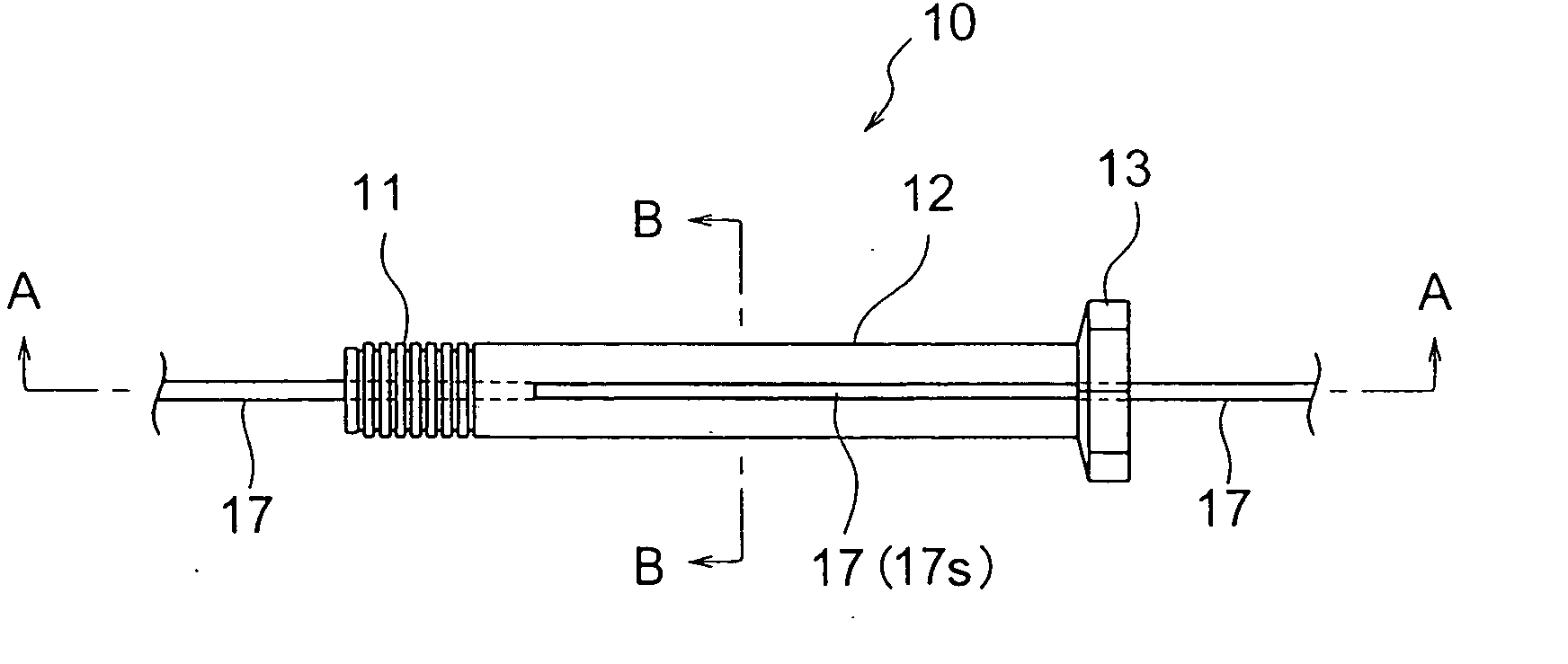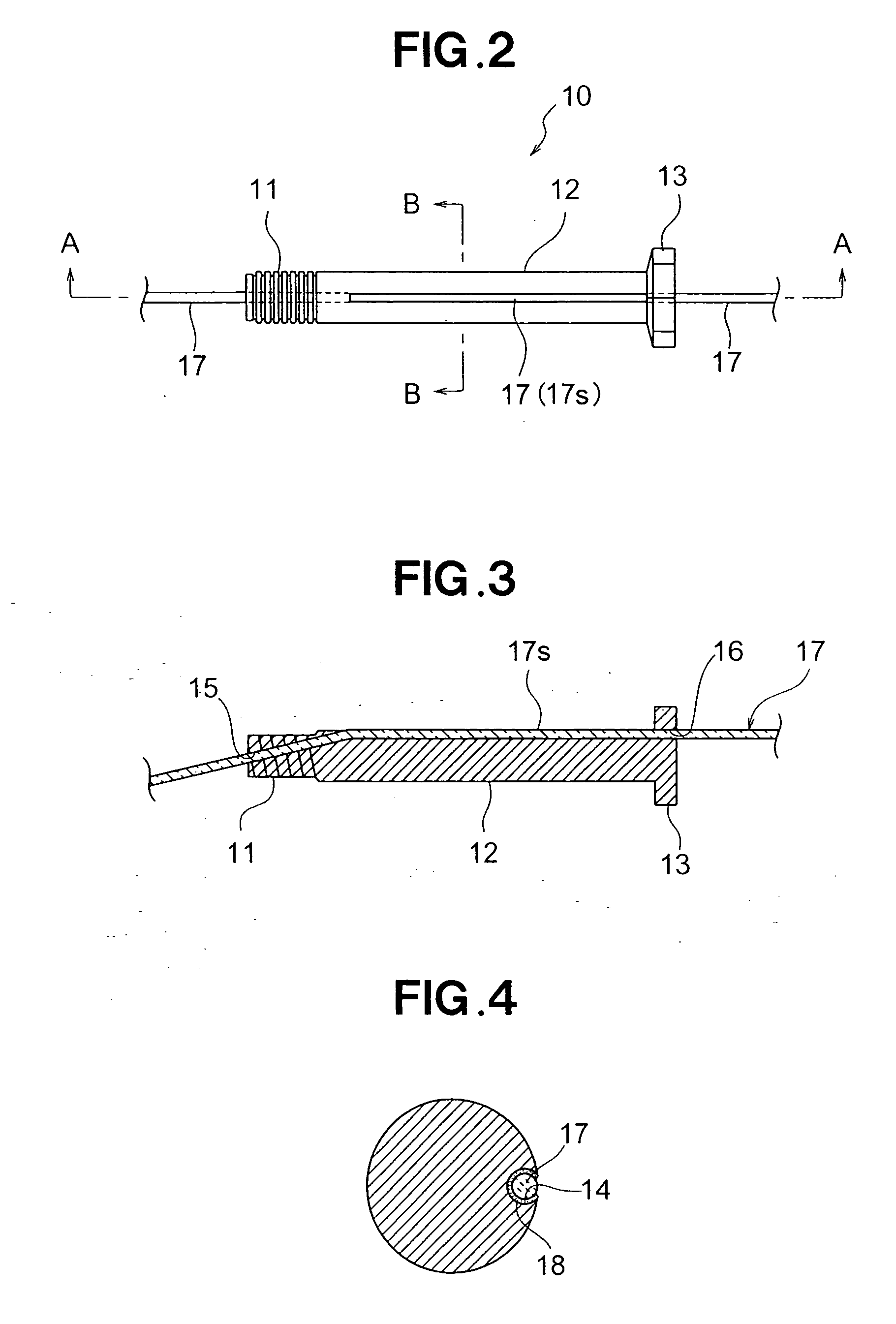Method for measuring shear load of fastening tool
a technology of fastening tool and shear load, which is applied in the direction of measuring torque/twisting force while tightening, fastening means, screws, etc., can solve the problems of difficult to verify the accuracy of analysis results made using finite element methods, difficult to rigorously predict the actual load of each bolt in a bolted joint, etc., to achieve high precision, exceptionally reproducible, and easy improvement of measurement sensitivity
- Summary
- Abstract
- Description
- Claims
- Application Information
AI Technical Summary
Benefits of technology
Problems solved by technology
Method used
Image
Examples
first embodiment
[0046] Initial reference is made to the flow chart of FIG. 1 showing a method for measuring shear load on a fastening tool, according to the present invention.
[0047] The method for measuring shear load on a fastening tool comprises: a sensor-positioning step S1 for positioning an optical fiber sensor on a surface of a fastening tool to be subjected to a measurement, or within the tool but near the surface (at a location proximal to the surface) thereof, so that the optical fiber sensor is positioned along a direction of an axis (longitudinal direction) of the fastening tool; and a measuring step S2 for measuring shear load acting on the fastening tool, based on a change in an optical characteristic of the optical fiber sensor that directly corresponds to a deformation of the fastening tool when shear load is applied to the fastening tool.
[0048] The measuring step S2 further comprises: a step S21 for inserting and tightening the fastening tool; a step S22 for measuring the optical c...
second embodiment
[0097]FIG. 19 is a basic structural diagram of the measurement system used in a method for measuring shear load on a fastening tool, according to the present invention. Of the optical fiber sensors 34 through 45 that are provided to the plurality of bolts 22 through 33 shown in FIGS. 5 and 6, the optical fiber sensors that are provided to bolts for which shear load is to be measured are connected to the light source 51 on one end and are connected to the optical detection part 52 on the other end. The measurement of the shear load on the bolt 22 will be described in this example.
[0098] Since the light source 51 and the optical detection part 52 are the same as in the first embodiment, the same notation will be used and a description will be omitted.
[0099] The optical fiber sensor 34 has a sensor part 34s, introduces light (incident light L1) from the light source 51 into the sensor part 34s, and detects light L3 transmitted from the sensor part 34s.
[0100] The optical detection par...
PUM
 Login to View More
Login to View More Abstract
Description
Claims
Application Information
 Login to View More
Login to View More - R&D
- Intellectual Property
- Life Sciences
- Materials
- Tech Scout
- Unparalleled Data Quality
- Higher Quality Content
- 60% Fewer Hallucinations
Browse by: Latest US Patents, China's latest patents, Technical Efficacy Thesaurus, Application Domain, Technology Topic, Popular Technical Reports.
© 2025 PatSnap. All rights reserved.Legal|Privacy policy|Modern Slavery Act Transparency Statement|Sitemap|About US| Contact US: help@patsnap.com



